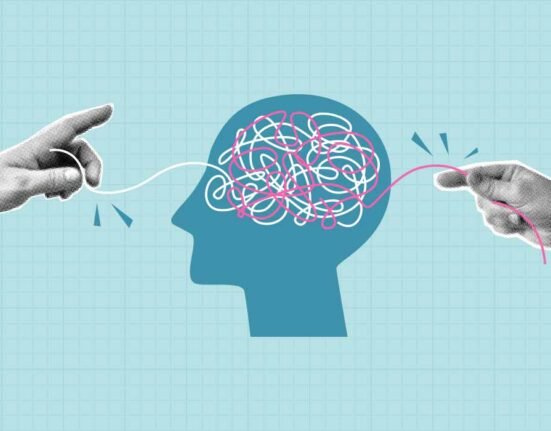Digital therapy and AI-supported treatments are revolutionising mental health care. These modern solutions are not just some fancy technology, but they do provide a real-life utility of enabling easier access to treatment, giving personalised assistance and perhaps even relieving the pressure for doctors who might be burned out [Cavarretta, M. V., et al (2025) & Hunt, M. (2025)].
Artificial intelligence-based platform such as cognitive behavioural therapy (CBT) chatbots and interactive programs (Elomia and Wysa are two examples of generative AI programs) against a specific problem, e.g., insomnia, has both demonstrated promising results in reducing symptoms of anxiety, depression, as well as stress [Li, T. M., (2025) & Hunt, M. (2025)]. And since these tools are available round-the-clock, this makes it possible for people to get hold of resources that they may have had to wait weeks for in the past, if they were even able to get them at all [Lovejoy, C. A. (2018) & Meinert, E. (2025)].
Read More: The Rise of Text Therapy: Can Digital Counselling Be as Effective as Face-to-Face Sessions?
Expanding Access and Reducing Wait Times
One of the ways digital therapy has improved mental health care is by making it more accessible, especially in places where there is a shortage of non-digital resources. AI-powered solutions have played an important role here. While traditional therapy might need to be booked in advance and may involve travel time, digital tools can offer help there and then. This is especially helpful for people with mild to moderate symptoms who can take worst care of themselves.
With on-demand platforms, users can get help whenever they need it. This fast support may help prevent more serious mental health difficulties like suicidal ideation. These platforms are also scalable. One tool can serve hundreds or thousands of users in real time. This allows them to help relieve some of the burden from health systems that are already slammed.
Read More: Healing or Hype? The Rise of Insta-Therapy and Pop Psychology
Easing the Burden on Providers
Digital therapy provides mental health practitioners with a way to lessen emotional exhaustion, in addition to technological advancements. Research shows that therapists who use telehealth or digital modalities report less burnout, particularly when it comes to depersonalisation and emotional exhaustion [Cavarretta, M. V., et al (2025)]. Clinicians can maintain more flexible schedules, frequently from the comfort of their own homes, with the help of asynchronous tools and online sessions [D’Alfonso, S. (2020)].
Automating routine aspects of care is another benefit of integrating AI tools into clinical workflows. Digital systems, for example, can manage symptom assessments, appointment reminders, and mood tracking. Without adding to the workload of clinicians, predictive analytics can even identify early indicators of patient decline and trigger prompt intervention [Gutierrez, G., et al (2024)].
Read More: The Risks of Overdiagnosis or Self-Diagnosis in the Digital Age
Potential to Improve Clinical Outcomes
Results are likely to be better when digital therapy platforms are used alongside standard of care, enabling:
1. Interactivity for improved patient engagement
2. Continuous monitoring and symptom checker
3. Content tailored to user data
4. Predictive algorithms for early intervention opportunities.
5. Not only do these benefits help drive increased treatment adherence, but they also help offload humans to address more complex cases.
Limitations and Concerns
Although its benefits are clear, digital therapy is not a perfect solution. There is also an element of a lack of human empathy in the AI-driven platforms. It is a challenge to communicate emotional nuance and nuances in relational depth, which are core components of good therapy. These tools can feel quite insufficient, and even alienating for clients who are dealing with complex trauma or co-occurring disorders [Minerva, F., & Giubilini, A. (2023)]. Overuse of digital (or only using digital) interventions is another problem. Lack of clinical oversight can cause user disengagement, misinterpretation of results, or what is referred to as digital fatigue. Paradoxically, this may cause more severe mental health symptoms and compound the professional demand [Bhatt, S. (2024)].
Read More: Remote Work and Mental Health: Navigating Isolation, Role Confusion, and Digital Fatigue
Technical and Ethical Challenges
Digital platforms can be hugely efficient, but are limited by the niggling technical issues, such as app crashes or unusable user interfaces. Perhaps even more importantly, the data security or privacy problem of digital health tools still stands [D’Alfonso, S. (2020) & Gutierrez, G., et al (2024)]. Clinicians have to trust that the tools they use in care are secure and reliable, while patients need assurances about the security of their private mental health information.
There are also ethical principles at play regarding consent, accountability, and transparency. People may get the wrong idea about what a tool does and then have their expectations inflated by false precision or inaccurate descriptions of exactly what a tool can do. Similarly, simplification of therapeutic content can also be problematic, as the trivialisation of severe mental health problems will still require skilled clinicians to come and pick up the pieces.
Read More: How to Manage Technostress and Enhance Digital Wellness
Integration, Not Replacement
As digital therapy continues to mature, it is essential to view it as a supplement to and not a substitution for traditional mental health care. For all its advantages in scalability and convenience, AI-driven platforms and online tools cannot replicate the depth that clinicians offer through hands-on therapeutic interactions. But these tools perform best when:
- Appropriate use in combination with telehealth or face-to-face services, particularly for those with mild to moderate symptoms.
- They work best as tools for the maintenance of ongoing care.
- They are best used for early intervention.
- Clinical supervision is still required to ensure safety and suitability.
Read More: AI in Therapy: Complement or Competition for Human Counselors?
A Balanced Future
Developing a fair and ethical manner for technology to fit into the mental health marketplace is only the first step towards what the future of digital therapy may look like. This is a vital lesson for both innovators and regulators as the technology that powers AI becomes more sophisticated and widely used— quality, inclusivity, and safety need to be on par with innovation. The goal is to improve, not reduce or bypass clinical practice.
1. Additional research support (more empirical).
2. Improving informed consent language.
3. Ethical standards guaranteeing accessibility and cultural sensitivity.
4. Better collaboration among clinicians and developers.
Read More: What is Virtual Reality Therapy (VRT)?
Conclusion
Digital therapy, including AI-driven interventions, has the potential to dramatically alter the delivery of mental health care. Formats, which when used appropriately, can enhance the patient experience, reach underserved populations and also help to reduce clinician burnout. But it can never replace therapy, especially the emotional human part.
A crucial balancing act between compassionate care and technological efficiency will be necessary going forward. If certain qualifications are met, and a unique set of digital features, of which therapeutic data (appropriately protected) is merely one among many features, can be employed ethically for the advancement rather than to the diminution of public mental health assistive opportunities, then it seems unlikely that this new landscape will not benefit treatment providers and the people they serve.
FAQ’s
1. What is digital therapy?
Digital therapy refers to mental health support delivered through digital platforms, including AI-driven tools like chatbots and interactive programs.
2. Can digital therapy replace traditional therapy?
No, digital therapy works best as a supplement to traditional care, especially for early intervention and mild symptoms.
3. How does digital therapy help mental health professionals?
It can reduce clinician burnout by automating routine tasks and allowing more flexible work schedules.
4. What are the risks of relying only on digital tools?
Overuse can lead to digital fatigue, missed emotional cues, and inadequate support for complex mental health needs.
5. Are digital therapy platforms safe to use?
While many are helpful, concerns about data privacy, technical issues, and ethical transparency remain important to address.
References +
Cavarretta, M. V., Pellerin, H., Maurel, E., Anzalone, S. M., Truck, I., Cohen, D., & Ingoglia, S. (2025). The effectiveness of online therapy in promoting well-being and reducing burnout among psychotherapists. Frontiers in Psychology, 16. https://doi.org/10.3389/fpsyg.2025.1510383
Hunt, M. (2025). Elomia – Digital Mental Health and Well-Being. ClinicalTrials.gov. (n.d.-c). https://clinicaltrials.gov/study/NCT06725147
Li, T. M., (2025). Efficacy of Digital Cognitive Behavioural Therapy for Insomnia (CBT-I)
ClinicalTrials.gov. (n.d.-d). https://clinicaltrials.gov/study/NCT06593262
Lovejoy, C. A. (2018). Technology and mental health: The role of artificial intelligence. European Psychiatry, 55, 1–3. https://doi.org/10.1016/j.eurpsy.2018.08.004
Meinert, E. (2025). Clinical Investigation of Wysa. ClinicalTrials.gov. (n.d.-e). https://clinicaltrials.gov/study/NCT05533190
D’Alfonso, S. (2020). AI in mental health. Current Opinion in Psychology, ScienceDirect. https://people.eng.unimelb.edu.au/dalfonso/articles/AI_in_mental_health.pdf
Gutierrez, G., Stephenson, C., Eadie, J., Asadpour, K., & Alavi, N. (2024). Examining the role of AI technology in online mental healthcare: opportunities, challenges, and implications, a mixed-methods review. Frontiers in Psychiatry, 15. https://doi.org/10.3389/fpsyt.2024.1356773
Minerva, F., & Giubilini, A. (2023). Is AI the future of mental healthcare? Topoi, 42(3), 809–817. https://doi.org/10.1007/s11245-023-09932-3
Bhatt, S. (2024). Digital Mental Health: Role of Artificial Intelligence in Psychotherapy. Annals of Neurosciences. https://doi.org/10.1177/09727531231221612













Leave feedback about this